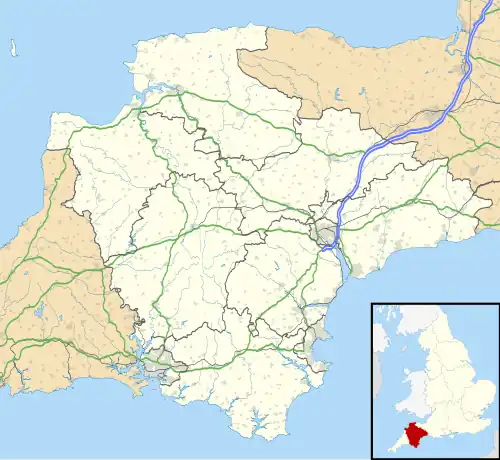St Thomas' Church, Exeter
| St Thomas' Church, Exeter | |
|---|---|
.jpg) St Thomas' Church in 2016 | |
 St Thomas' Church, Exeter | |
| 50°42′57″N 3°32′32″W / 50.71578°N 3.54218°W, | |
| Country | England |
| Denomination | Church of England |
| History | |
| Status | Operational |
| Dedication | St Thomas |
| Architecture | |
| Heritage designation | Grade I listed |
| Architect(s) | John Hayward (architect) |
| Style | Gothic and Gothic Revival |
| Years built | Medieval with 19th century restoration |
| Specifications | |
| Number of towers | 1 |
| Materials | Limestone and Heavitree stone |
| Administration | |
| Province | Canterbury |
| Diocese | Exeter |
| Archdeaconry | Exeter |
| Parish | St Thomas, Exeter |
St Thomas' Church in Exeter, Devon, is a parish church in the Church of England. It is a Grade I listed building.
History
Originally the site of a 13th-century chapel by Cowick Priory, a church here was consecrated in 1412 but was burnt down in 1645 in the English Civil War. This was rebuilt by 1657.[1] Restorations were carried out by John Hayward in 1871.[1]
The building's listing describes its transepts as 'impressive examples of pre-Victorian Gothic', and describes the tower as 'an important example of Gothic survival in the post-Reformation period'.[1]
The wooden lectern was brought to the church from Exeter Cathedral circa 1840. It dates from the 14th century and is the earliest surviving cathedral lectern.[1]
The royal arms at the west end of the church date from 1682.[1]
Memorials
There is a late medieval-style canopied table tomb to Christina Medley (died 1845) by the London sculptor John Bacon the Younger, who was her father.[1]
In the north aisle is an 1838 family pew for the Graves-Sawle family.[1]
The largest of the many wall monuments is to Thomas Northmore.[1]
Current day
The church hosts a number of community groups and events.[2]